Cox Forecasts Used Vehicle Pricing Trends for 2023

Wholesale used-vehicle prices continued to climb during the last weeks of 2022, though the overall trend actually had secondhand valuations down by 15 percent for the entire year. That’s due largely to auction prices cooling off after the summer ended and the situation has many speculating that 2023 could be the first year we see massively inflated car prices begin to return to normal.
Cox Automotive recently released its Manheim Used Vehicle Value Index — a measurement of wholesale used-vehicle prices calculated by following Manheim's U.S. auctions and conducting the relevant statistical analysis — noting that it rose 0.8 percent in December from November. But this was just a blip on the radar compared to the sustained declines witnessed during the autumn months.
With inflation rates the highest they’ve been in decades, we’ve started seeing data supporting claims that many consumers are bowing out of the automotive market entirely. Used vehicles, formerly the bargain alternative to buying new, have ballooned in price since 2020. Inventories were strained, as automakers endured rolling production shortfalls, encouraging everyone to jack up the price on whatever they still had sitting on the lot. But there was also a sense that the market had correctly speculated that a subset of people would overpay simply out of a sense of generalized desperation. Surveys were conducted asking consumers how much they’d be willing to pay in dealer markups just to get into something new – with the resulting figures often being tragically high.
New vehicles have grown prohibitively expensive and their secondhand cousins haven’t been much better. But the public tolerance for high prices appears to have evaporated. With recession talk now permeating every stratum of the press, buyers know there’s a good chance a better deal could be just a few months away. Meanwhile, today’s vehicles are still going for values that would have been considered totally outrageous a few years ago.
"While that [15 percent] decline was the largest in the series' history, compare that drop to the overall 88 percent increase in the 21 months from April 2020 to January 2022," Chris Frey, senior manager of economic and industry insights at Cox Automotive, said during Monday’s quarterly insights call.
According to Automotive News, Cox actually tweaked the starting point for the data it uses on the Manheim index – by having things begin in January 1997, rather than January of 1995. Frey claimed that this was done to “help improve accuracy and consistency across the full history of the data.” However, it seems like starting things two years later could manipulate the data in unforeseen ways.
The outlet is currently predicting that the Manheim index will decrease 6 percent by June if the period turns out to be a “disappointing tax refund season” and rising interest rates result in higher than normal deprecation. Considering the present state of the economy, those both seem like givens. But how will changes in wholesale valuations translate into what the average car buyer will be seeing at the dealership?
Well, assuming you’re crazy enough to try and buy used from dealers (private sales have been looking much fairer lately), Cox does anticipate pricing falling across the board. However, those declines are likely to be modest and could be offset by less favorable interest rates. Retail prices for consumers traditionally follow changes in wholesale prices. If they drop steadily, we should be on track for less-insane automotive pricing by the summer. But if interest rates continue to spike, you may need to put a lot of money down to make up the difference on a loan.
"Once that tourniquet [of interest rate increases] starts getting twisted, that really stops a lot of people or delays their purchase decisions, new or used," Frey explained. "But in this case, on the used side, it's probably a little bit more."
Since interest rates tend to be higher on used vehicles, dealers should come to understand that only the dumbest people are willing to overpay for a vehicle and then be saddled with loan terms guaranteed to drain their finances. Normal consumers simply won’t participate, likely forcing markdowns. Dwindling auction prices should also help, as fewer people bid on cars, gradually helping inform sellers of what the market will tolerate.
But the shift might not be sufficient to bring back what would be considered normal vehicle pricing. Automakers are suggesting supply chain constraints could persist and continue to suppress new vehicle production. The industry has already figured out how to make money despite posting some of the worst sales numbers since the last recession. So there’s a chance that could be the preferred strategy moving forward – which would leave used vehicles trading higher than they otherwise would have.
Cox estimated that retail used-vehicle supply was hovering somewhere around 52 days at the end of December. That’s down from 54 days at the end of November and up from 51 days at the end of December 2021. Meanwhile, wholesale used-vehicle supply ended December at 31 days, up from 29 days at the end of November, and 26 days at the end of December 2021.
Used retail sales fell 7 percent in December from November and were down 10 percent (year over year) for both months. Average wholesale prices for 3-year-old vehicles – the largest model year cohort at Manheim's auctions – likewise fell 2.2 percent in December from November.
Cox believes used-vehicle demand could continue to stabilize and even improve halfway through 2023, as lower wholesale prices gradually create more affordable buying opportunities. But this is again contingent on interest rates cooling off and helping consumers’ monthly payments stay manageable. That said, even the most optimistic projections feel more like an effort in rationalizing the extremely high prices that have become normalized since 2020.
Nobody is really offering a scenario in which the industry finally gets its act together and we begin seeing healthy supply chains and pre-pandemic pricing. Instead, we’re getting more of the same with the possibility of things being slightly better in the months to come. But this assumes a large subset of buyers are still willing to bend over and accept whatever pricing the dealer demands when there’s mounting (albeit difficult to quantify) evidence to the contrary. Here’s hoping the people shopping in 2023 are better at negotiating and those that can maintain their current vehicles for a bit longer opt to do so. Because those will be the largest factors in determining whether the automotive market remains grotesquely inflated or actually begins trending back toward something reasonable.
[Image: Gretchen Gunda Enger/Shutterstock]
Become a TTAC insider. Get the latest news, features, TTAC takes, and everything else that gets to the truth about cars first by subscribing to our newsletter.

A staunch consumer advocate tracking industry trends and regulation. Before joining TTAC, Matt spent a decade working for marketing and research firms based in NYC. Clients included several of the world’s largest automakers, global tire brands, and aftermarket part suppliers. Dissatisfied with the corporate world and resentful of having to wear suits everyday, he pivoted to writing about cars. Since then, that man has become an ardent supporter of the right-to-repair movement, been interviewed on the auto industry by national radio broadcasts, driven more rental cars than anyone ever should, participated in amateur rallying events, and received the requisite minimum training as sanctioned by the SCCA. Handy with a wrench, Matt grew up surrounded by Detroit auto workers and managed to get a pizza delivery job before he was legally eligible. He later found himself driving box trucks through Manhattan, guaranteeing future sympathy for actual truckers. He continues to conduct research pertaining to the automotive sector as an independent contractor and has since moved back to his native Michigan, closer to where the cars are born. A contrarian, Matt claims to prefer understeer — stating that front and all-wheel drive vehicles cater best to his driving style.
More by Matt Posky
Latest Car Reviews
Read moreLatest Product Reviews
Read moreRecent Comments
- MaintenanceCosts "And with ANY car, always budget for maintenance."The question is whether you have to budget a thousand bucks (or euro) a year, or a quarter of your income.
- FreedMike The NASCAR race was a dandy. That finish…
- EBFlex It’s ironic that the typical low IQ big government simps are all over this yet we’re completely silent when oil companies took massive losses during Covid. Funny how that’s fine but profits aren’t. These people have no idea how business works.
- Ajla Goldman Sachs 🥂
- Rna65689660 DVR and watch all that are aired. Has been this way for 40 years.
























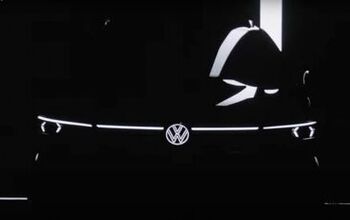


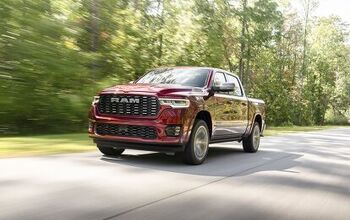

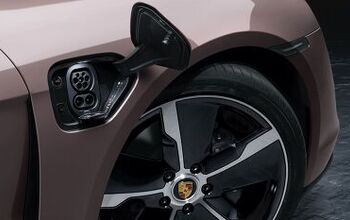
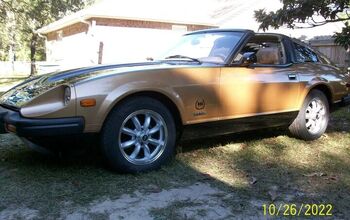
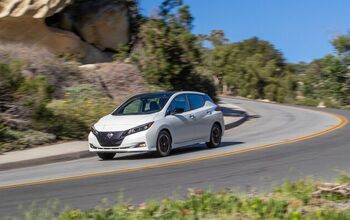

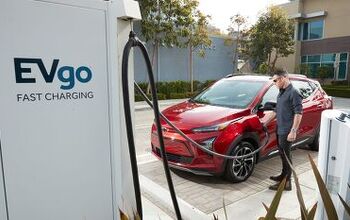
Comments
Join the conversation
I’m seeing stats showing some vehicles retaining 95% of their value after 5 YEARS due to the elevated price of used cars. Clearly this can’t go on - it’s just a question of time as to when supply issues will dissipate. (Does anyone else remember the old predictions that used gas car values would go to zero as EVs swamp the nation? That’s not happening anytime soon.)
"According to Automotive News, Cox actually tweaked the starting point for the data it uses on the Manheim index – by having things begin in January 1997, rather than January of 1995. Frey claimed that this was done to “help improve accuracy and consistency across the full history of the data.” However, it seems like starting things two years later could manipulate the data in unforeseen ways."
How to lie with statistics.